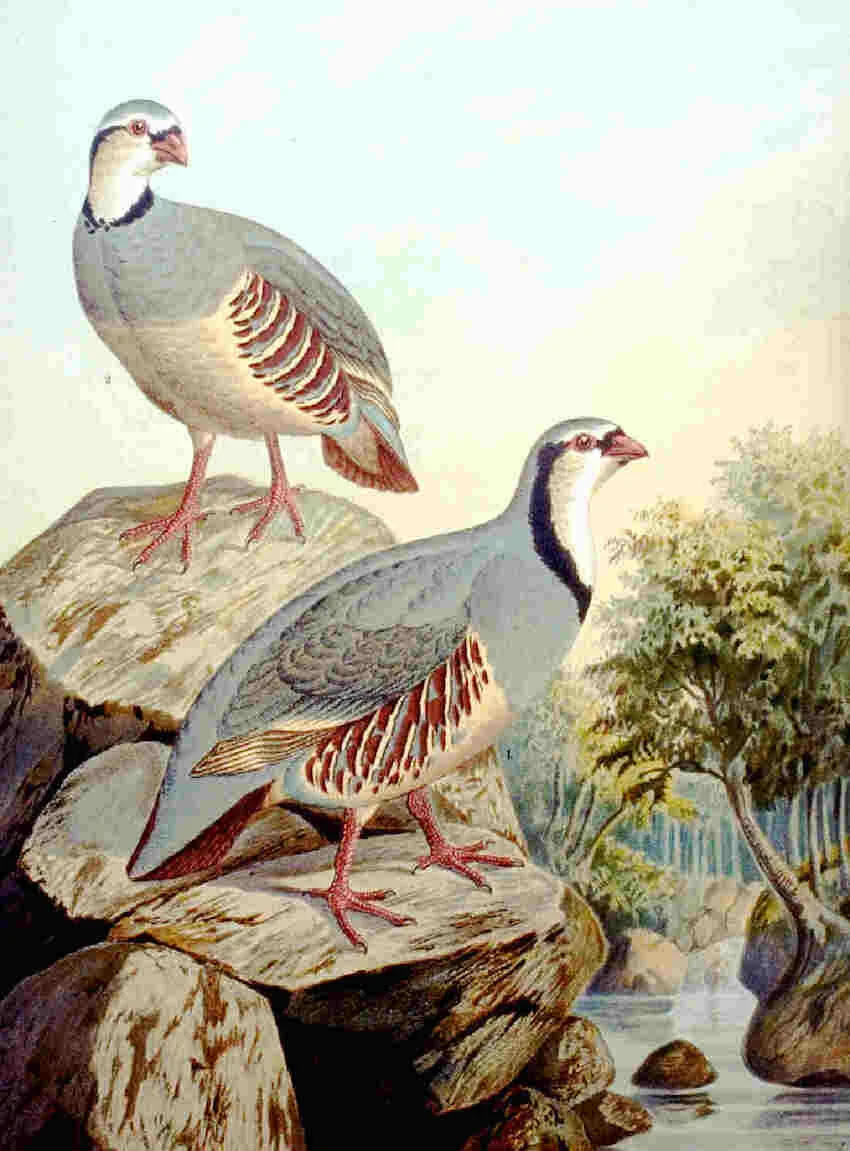CAPERCAILLIE (Tetrao urogallus) - Grand tétras
Summary
A shy and rare bird of old growth forest, one of the largest birds in Europe. It displays in leks with a characteristic “cork popping sound”:
Capercaillie male
This is nearly the biggest bird in Europe with the males weighing in at around 4kg with some recorded up to 6kg, females are about 60% the size of males.
In Switzerland we are at the south-western fringe of its main distribution range which is from Scandinavia across Russia. But whilst it has a large population throughout this range in several countries, it is endangered and in severe decline, mainly from forest destruction but also sport hunting which still occurs in some places especially Russia. Its very localised distribution in Switzerland reflects this population decline, and additionally in Switzerland it is a bird that has suffered from winter sports development as new technology and equipment allow people into previously inaccessible areas creating stress and disruption during a harsh period of the year when life is hazardous anyway for wild species. In some parts of Switzerland the latest census shows small increases in population in certain areas, possibly benefitting from biodiversity-sensitive forestry practises.
Tracks in the snow
It is a forest species, favouring old mature forests which are rather open and with a good ground cover of Vaccinum (blueberries or myrtilles- type plants). Like the Black Grouse this is also a "lekking" species and the males show off and display and fight with each other whilst the females watch from nearby trees, descending for copulation when they have made their choice. Rather like a student disco really. This process usually starts in early spring when there is snow on the ground. To help with this chilly pastime they have feathered legs, and the toes have horny protrusions which act like snowshoes so that as the males strut up and down they do not ignominiously fall over. Rather like a student disco really.
Let battle commence
At this time the males get really loaded with testosterone and can become very aggressive and have been known to attack humans who enter their territory, or their own reflection in the side of a car (that big curved beak must make a mess of the paintwork !).
Their rarity in Switzerland means that their display locations are quite appropriately well-guarded secrets, and they should not be approached. Hence my recordings are all made from a distance. When displaying, the males make a series of truly impressive noises which would scare any competitor. It is made up of two main parts, the first is a series of accelerating double-clicks which terminate in a loud "pop"!:
This is then followed by a hissing, sneezing, rattling snort which can also be made on its own when it has almost a vomiting or retching quality, here repeated four times:
Put all this together and it sounds like this:
You would never confuse it with anything else ! Here is another example which was not too far from a busy mountain pass:
Female © Chris Hails
The females will also call, making a sort of clucking noise. I came upon one in the forest one day which was clucking persistently and was able to get a nice recording:
This still remains for me one of our most enigmatic species of the forest.
Capercaillie studies © Frank Jarvis








